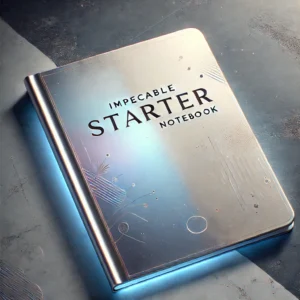An Introduction
Supported by ThinkOnward, the Image Impeccable Starter Notebook is a vital tool meant to help participants in the “Image Impeccable: Journey to Clarity” challenge. Emphasizing picture processing and analysis, this challenge asks contestants to create ideas that improve image clarity. Providing basic tools, datasets, and code implementations to enable people get started successfully, the starting notebook acts as a disciplined guide.
The goal of the starting notebook, its main characteristics, and how users could use it to raise their challenge performance are investigated in this paper. This tutorial will present ideas to maximize the possibilities of the notebook regardless of your level of expertise as a data scientist.
The Image Impeccable Starter Notebook is what?
Comprising an organized Jupyter Notebook, the Image Impeccable Starter Notebook offers a step-by-step tutorial to grasp the task.
Preloaded datasets and methods of data inquiry.
Techniques of preprocessing to prepare and clean photos.
a basis model implementation for first trial.
Measures of model performance: evaluation criteria.
Rules for submission to guarantee proper result formatting.
Particularly designed for the ThinkOnward Image Impeccable challenge, this notebook offers a solid basis for participants.
Important Characteristics of the Perfect Image Notes Starter Notebook
The notebook opens with a descriptive title that precisely states its intended use. This guarantees consumers’ instant awareness of its part in the task.
2. Objective and Summary
An introduction section clarifies the challenge goals so that users may know what has to be done. This part contains: a synopsis of the difficulty.
Delights and expected results. Deliverables
Important events and turning in deadlines.
3. Data Exploration and Loading
Understanding the dataset is one of the initial stages in every machine learning task. The notebook offers load the dataset code snippets.
Techniques of visualizing to investigate pictures.
Image metadata and structure explanations.
4. Image Preparation Strategies
Raw picture data sometimes calls for preprocessing to enhance consistency and clarity. The first notebook contains standardizing photographs by means of normalizing and resizing.
Strategies of noise reduction to improve image quality.
augmentation of data to raise dataset variance.
5. Baseline Model Applied Methodology
There is a simple model given to participants for reference. This facilitates them.
Know the basic model building method.
Against a baseline, compare their bespoke models.
Try enhancements to increase performance.
6. Standards of Evaluation
The notebook contains PSNR (Peak Signal-to– Noise Ratio) for evaluation of picture quality to gauge the success of models.
Comparative image structural similarity index measure, or SSIM.
Evaluation of deep learning models: accuracy and loss functions.
7. Submission Guidelines
The notebook offers the right file format for entries to guarantee seamless competition participation.
detailed directions for submitting results.
Advice for typical mistake troubleshooting.
Using the Image Perfect: How to Beginning Notesbook
First step: get and arrange the notebook.
Get the notebook from ThinkOnward GitHub’s source.
Install any required Python libraries—such as TensorFlow or OpenCV.
Check the directory layout and dataset download.
The second step is data exploration and understanding.
Run the offered scripts for data visualization.
Examine sample photos to find noise and trends.
Third step: use preprocessing methods.
Apply picture clarity denoising techniques.
Try different contrast changes.
Train and assess the baseline model in step 4.
Train the CNN that is prebuilt.
Check evaluation criteria to grasp model performance.
Step 5: Try custom models.
Change batch sizes and learning rates among other hyperparameters.
Try several loss functions and optimizers.
Step 6: Send Results
Structure your forecasts according to submission guidelines.
Upload your findings on the ThinkOnward competition page.
Advantages of using the starter notebook
1. Organised Advice
The notebook lowers participant learning curve by simplifying the challenge procedure.
2. Preloaded codes and data
Starting from nothing is not necessary; preloaded datasets and example code speed progress.
3. Consistent Assessment
Using the given assessment criteria will help participants guarantee fair performance comparisons.
4. Lower Technical Obstacles
Users with very little expertise may nonetheless follow the lessons and create competitive models.
5. Iteration Faster
Participants’ chances of obtaining better results are increased by fast testing new approaches.
Often asked questions, or FAQs,
The Image Impeccable Starter Notebook serves mostly for what?
Providing basic tools and baseline code to enable participants start the “Image Impeccable: Journey to Clarity” challenge, the notebook functions as a disciplined guide.
2. Does using the starting notebook need prior experience?
Although previous knowledge in data analysis and machine learning is beneficial, the notebook provides explicit directions that let beginners access it.
3. Can I change the code included in the beginning notebook?
Indeed, participants are urged to change and enhance the given code to provide more creative answers for the problem.
4. The starting notebook is available where?
The notebook may be found on the official GitHub repository of ThinkOnward.
5. Exists a deadline for the challenge?
Indeed, the “Image Impeccable: Journey to Clarity” challenge has a set chronology. Consult the ThinkOnward official challenge website for specifics.
conclusion
Participants in the ThinkOnward challenge must need the Image Impeccable Starter Notebook. Preloaded data, baseline models, and assessment criteria enable users to concentrate on improving their image-processing solutions rather than infrastructure.

